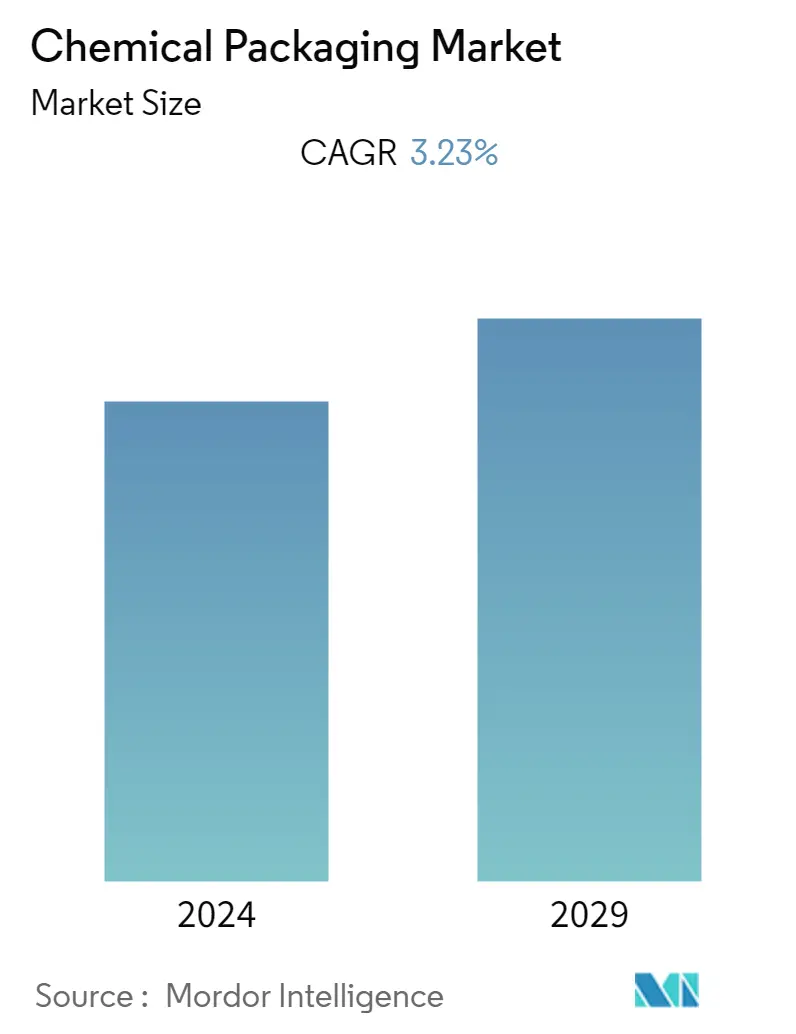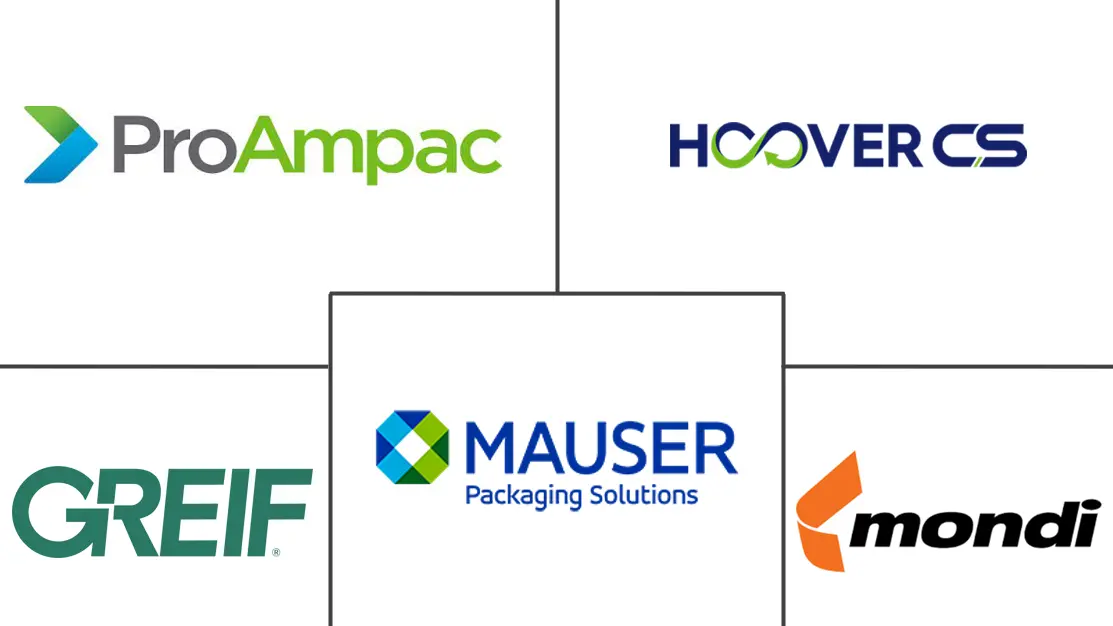Market Size of Chemical Packaging Industry

| Study Period | 2019 - 2029 |
| Base Year For Estimation | 2023 |
| CAGR | 3.23 % |
| Fastest Growing Market | Asia-Pacific |
| Largest Market | North America |
| Market Concentration | Medium |
Major Players
*Disclaimer: Major Players sorted in no particular order |
Need a report that reflects how COVID-19 has impacted this market and its growth?
Chemical Packaging Market Analysis
The chemical packaging market is expected to witness a CAGR of 3.23% during the forecast period.
- The increasing sales of chemicals are anticipated to stimulate the need for chemical packaging through traditional and online retailers globally. Additionally, due to their ability to be repaired or reused, the rising demand for drums and intermediate bulk containers (IBCs) in chemical packaging is anticipated to expand the market.
- Moreover, various regions are focusing on imposing stringent regulations for chemical packaging. The ADR European Agreement considering the International Carriage of Dangerous Goods expresses the importance of choosing the right packaging for dangerous goods in its provisions on such packaging, stating that IBCs and large packaging should not be harmed or significantly weakened by such dangerous goods and should not catalyze a reaction. As awareness of the environmental and health effects of commonly used chemicals in packaging, such as bisphenol-A (BPA) and per- and polyfluoroalkyl substances (PFAS), grows, the European Union and the United States are expected to enforce stricter regulations in the upcoming years. This drives the requirement for robust packaging solutions in the chemicals sector of the region.
- Several new packages satisfy the safety concerns and provide a greener footprint. Traditionally, many chemical manufacturers have used pails and drums to transport their products. While these products have several benefits over competitive materials, new products satisfy a significant market sustainability gap. For instance, bag-in-box and industrial bulk containers allow for more product-per-package and are collapsible, reducing landfill space and transportation costs.
- Intermediate bulk containers (IBCs), which are an alternative to drums, are particularly well suited to the chemical industry because they can safely transport a variety of solid or liquid products, including those that require safe handling as well as those that are classified as hazardous, like classes 3, 4, 5, and 9, as well as other chemicals, like edible liquids, lubricating, and essential oils.
- The market is expanding due to growing public knowledge of the advantages of chemical packaging, which lowers the risk of deaths and asset damage from chemical leaks. Rapid urbanization, globalization, and modernization are additional elements that promote growth.
- However, changing regulatory standards, fluctuations in raw material costs, growing waste levels, and increasing environment wastage regulations are expected to hamper some chemical packaging products' market growth.
- According to the American Chemistry Council, basic chemicals, including organic chemicals, inorganics chemicals, plastic resins, synthetic rubber, and manufactured fibers, witnessed a global production increase of 1.4% during the initial phases of the pandemic and have not seen a substantial impact due to COVID-19. However, the production of specialty chemicals took a significant hit as the global output declined by 11.2%, and especially for specialty chemicals, such as coatings, the show fell by 25.2% during the first wave of the pandemic, which negatively affected the usage of packaging in the specialty chemicals segment.
